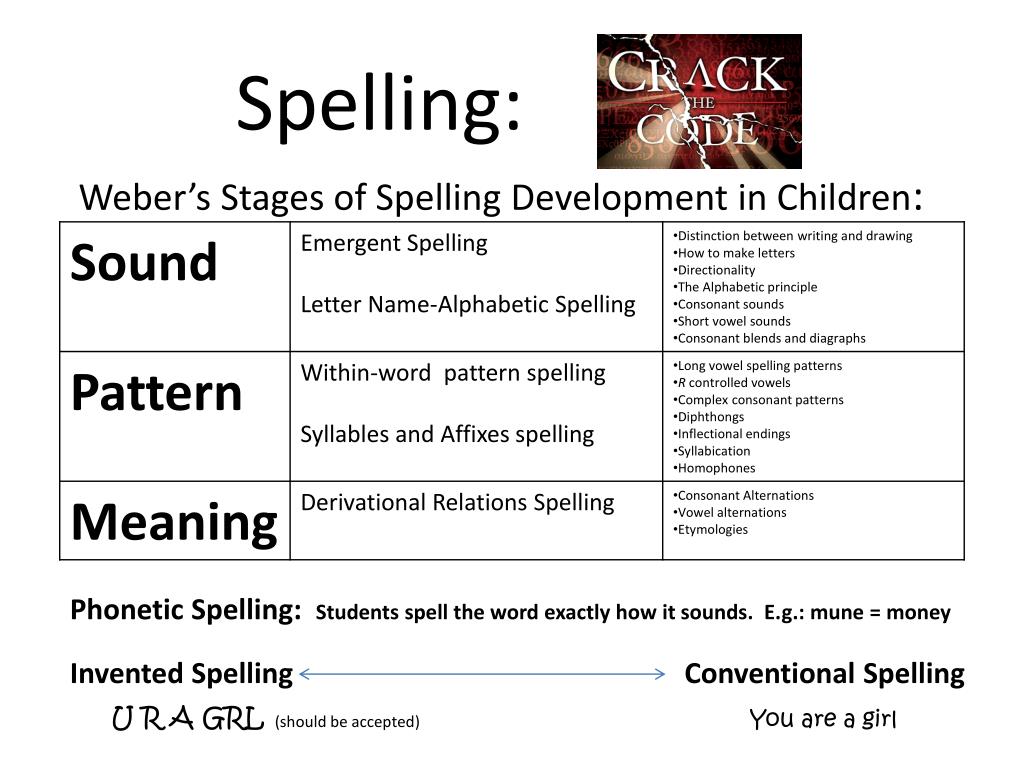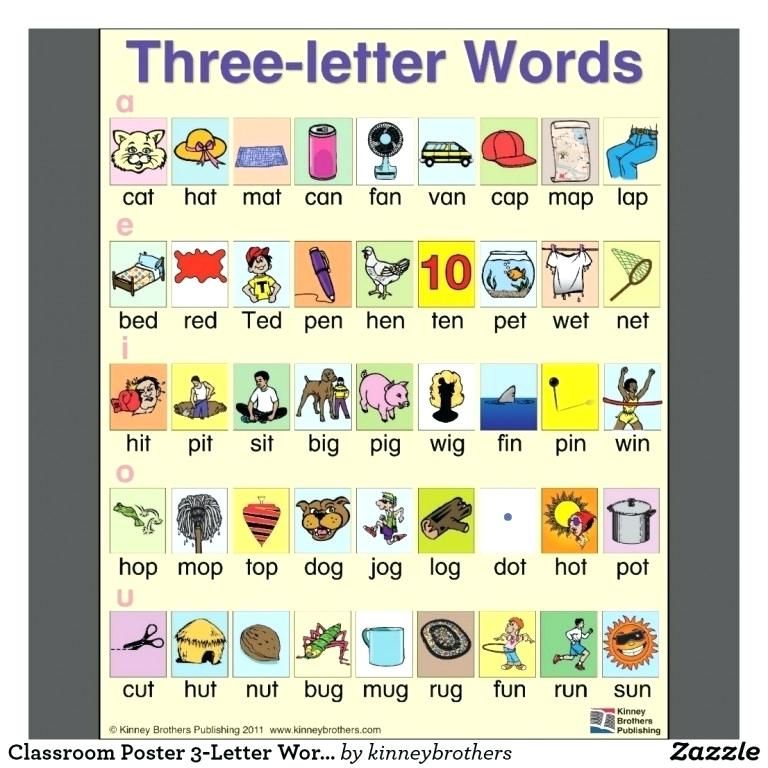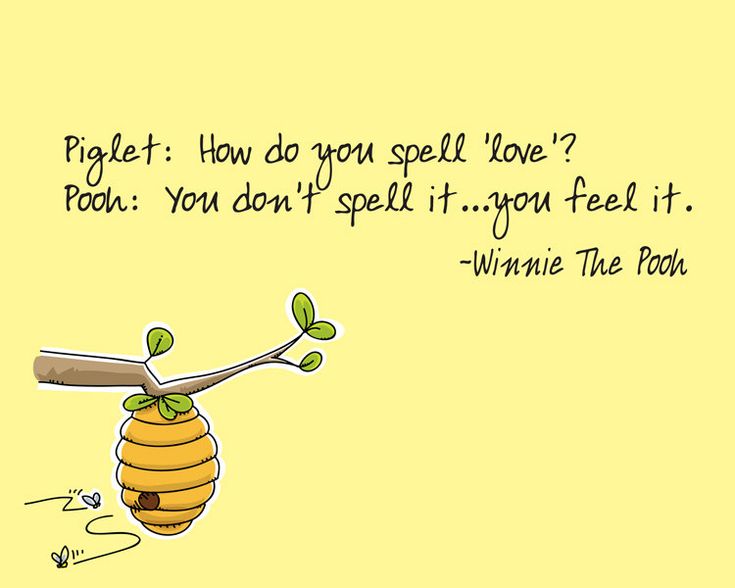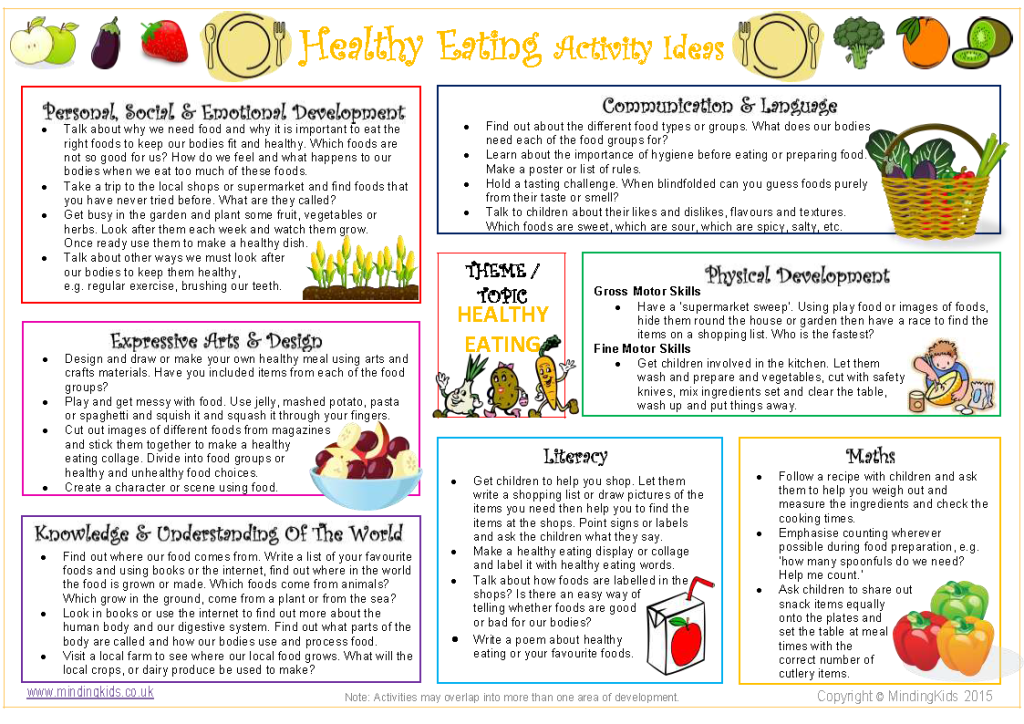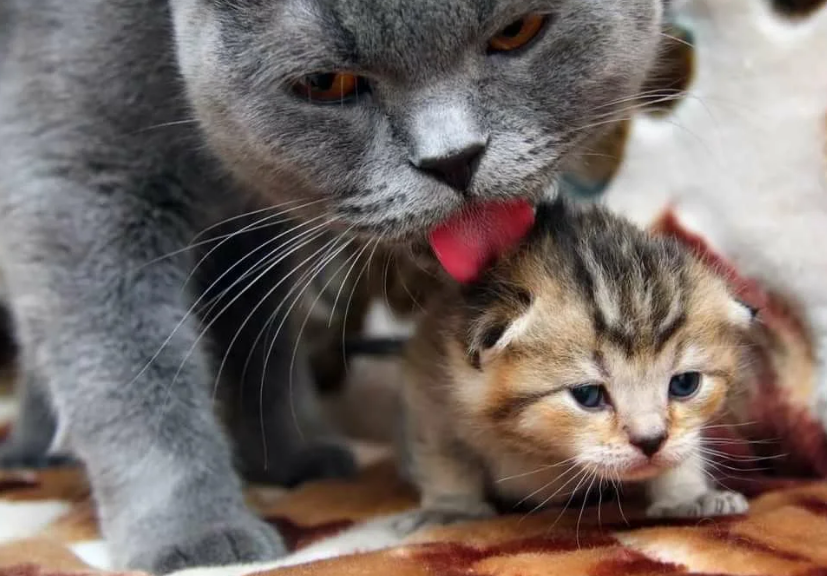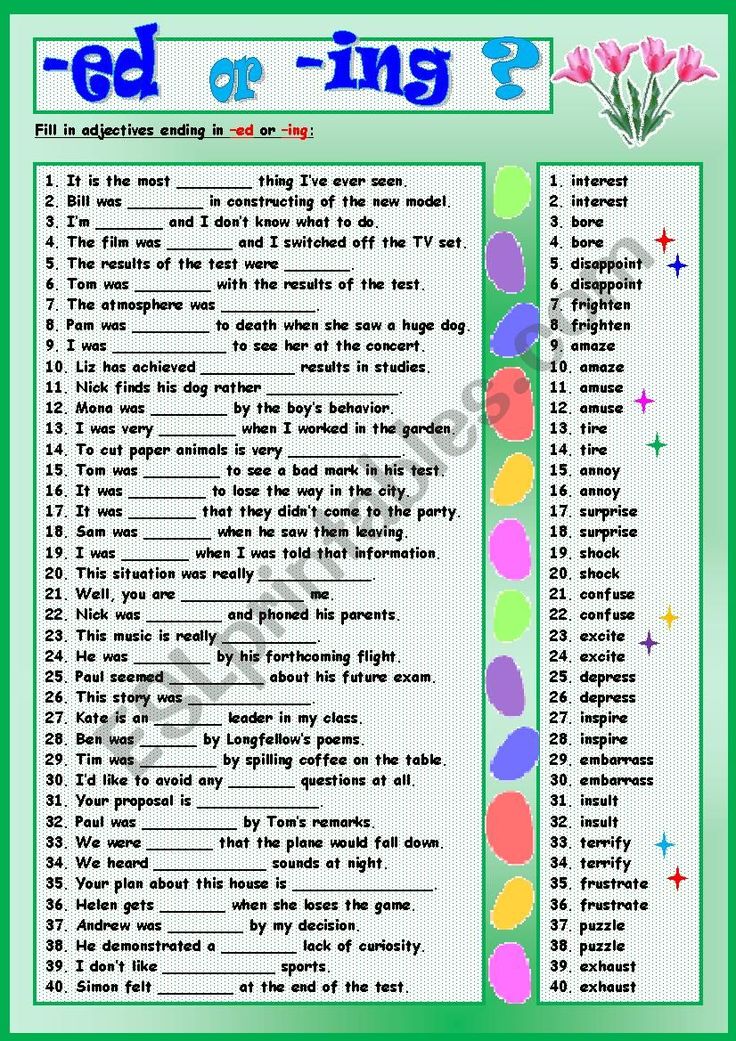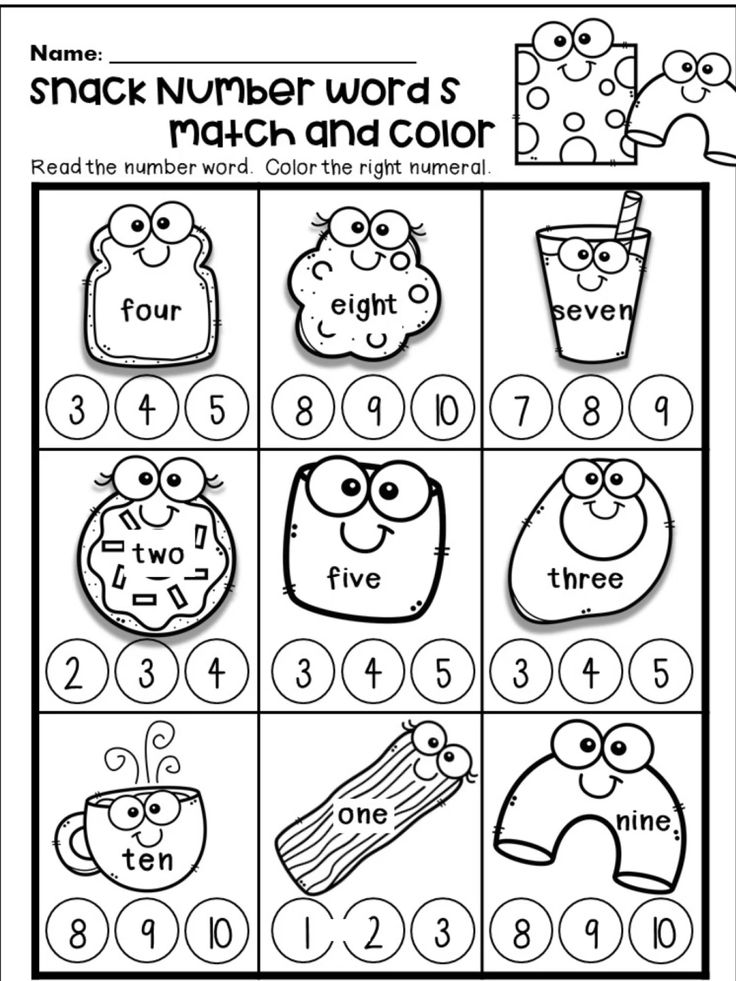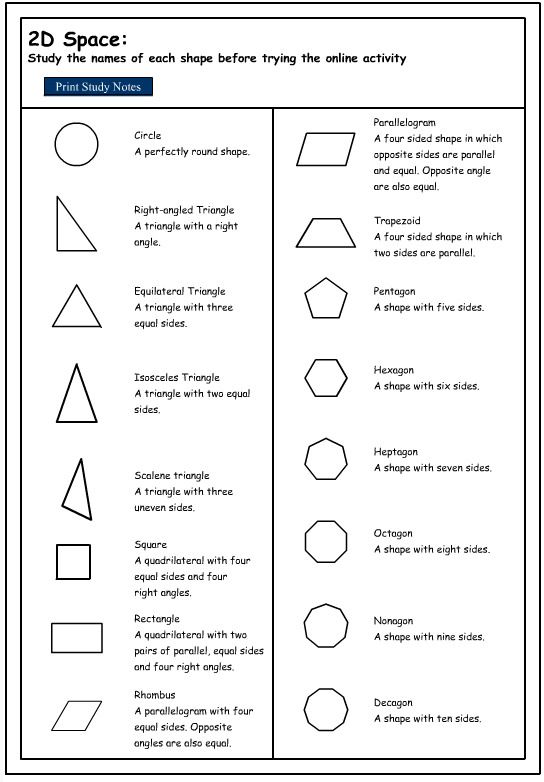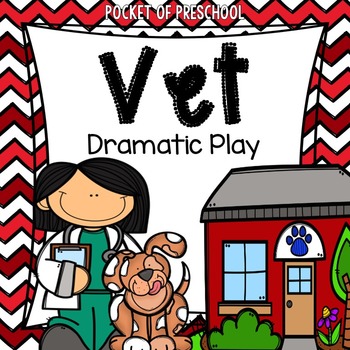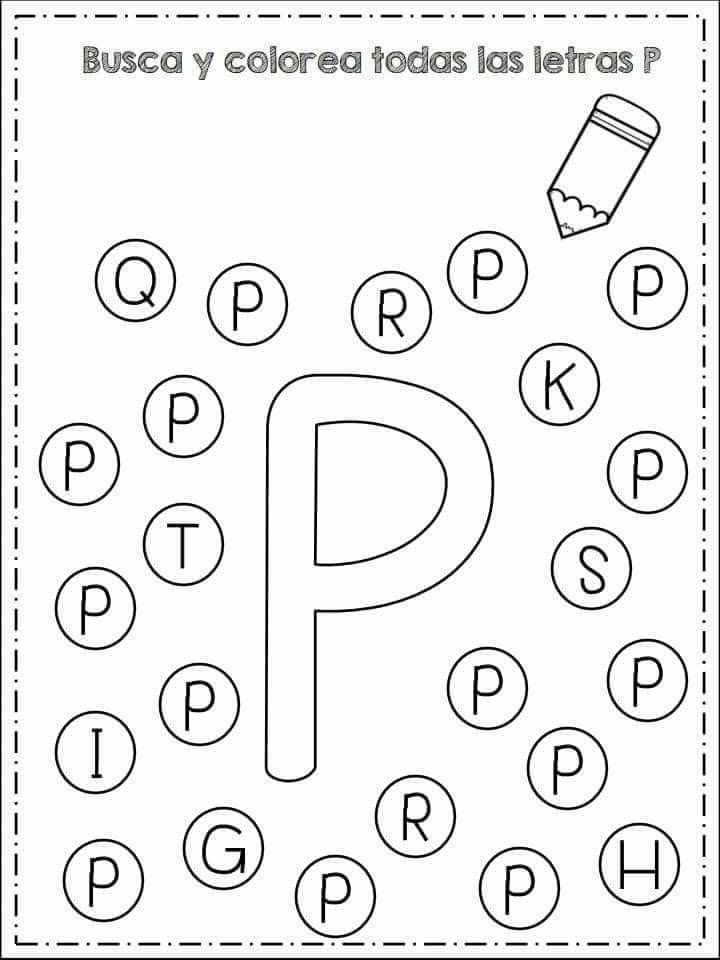What are the five stages of spelling development
The Stages Of Spelling Development: A Guide For Parents
From scribbled stories to made-up words, a child’s first steps in writing are exciting! But it takes time to become a proficient speller. There are five stages of spelling development your child will progress through as they go from emergent “invented” spelling to accurate “dictionary” spelling.
The Stages Of Spelling Development
Precommunicative Stage
At the precommunicative stage of spelling development, children lack an understanding of letter-sound correspondence.
This means that the relationship between written language (the letters of the alphabet and how they combine to make words) and spoken language (vocabulary your child may already know or will eventually learn) isn’t yet clear to your child.
Your child may show a substantial interest in learning how to read and write, though. They’re probably at the height of their scribbling craze! Their stories and drawings may be full of color, but not so many letters.
The good news: this is a positive first step for children! Even if their scribbling may not be legible to us, it demonstrates that they have an understanding of what writing does — expresses and communicates their ideas.
In that way, even if their drawings and scribblings look similar to us adults, kids at this stage clearly understand the difference between the purposes of the two.
This spelling development stage may even feature some letter-learning. However, kids likely aren’t fully comfortable relating written letters to their respective sounds. That’s OK! That will happen in the next stage.
Semiphonetic Stage
The semiphonetic stage is true to its name — your child will get their first concrete exposure to phonetic learning during this time.
Initially, they’ll begin with learning how to match written letters to letter sounds. When shown letters of the alphabet, they may be able to pronounce the correct phonetic sound for each letter. For example, if they see the letter “b,” they may say “buh” for the /b/ sound.
As they transition into writing, this phonetic learning will reflect in their sentences. They may even ignore vowels since they aren’t as phonetically predictable as consonant sounds. For example, they may write “i lv u” when writing out a card to family or friends.
This is nothing to worry about. In fact, it’s amazing progress! It shows that your child has a solid grasp of their phonetic letter sounds and understands how to use them in written language.
Irregular words — words that don’t sound the same way they’re spelled — may trip them up at this stage, but they’ll master those in time!
For now, praise your child for their progress. We know they’re doing a great job and will tackle those pesky silent e’s and -nd blends soon.
Phonetic Stage
The phonetic stage of spelling development is when your child’s letter-sound correspondence learning comes into full bloom, so to speak.
Consonant-vowel-consonant (CVC) words may become easier for them to learn and read as their foundation in phonetic spelling grows even more concrete.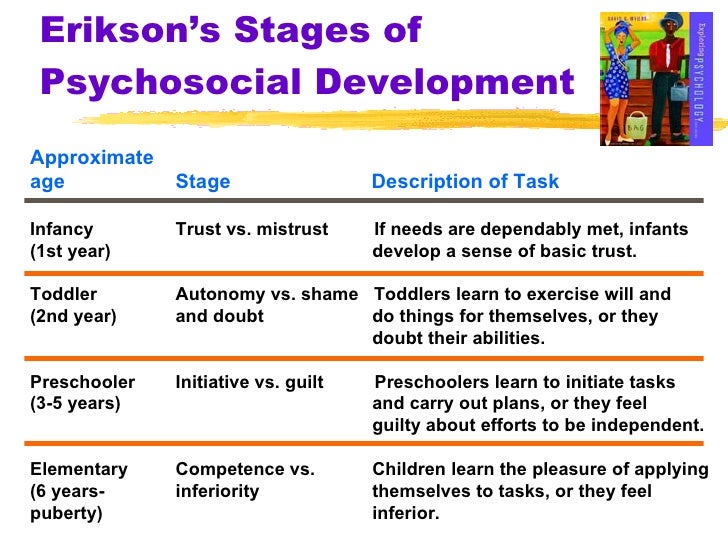
They may even begin to identify groups of letters that make certain sounds when they speak. These letters are often grouped together and make common sounds in spoken language — examples include -ing, -ly, -er, sh, and so on!
When spelling non-CVC words, kids at this stage may not abide by perfect spelling rules when branching out into those phonetically irregular words. So when they want to describe a “small truck” they may end up writing about a “smol truk.”
Again, these are perfectly normal steps in your child’s ongoing spelling development and something you both should be proud of!
Transitional Stage
With their phonetic instincts strong at this point in their spelling development, your child may have increasing success with memorizing those words that just can’t be sounded out.
Rather than relying on phonology, they may begin to notice visual cues and patterns to assist them with pronunciation and word-learning. Memorization will become a handy tool to add to their arsenal.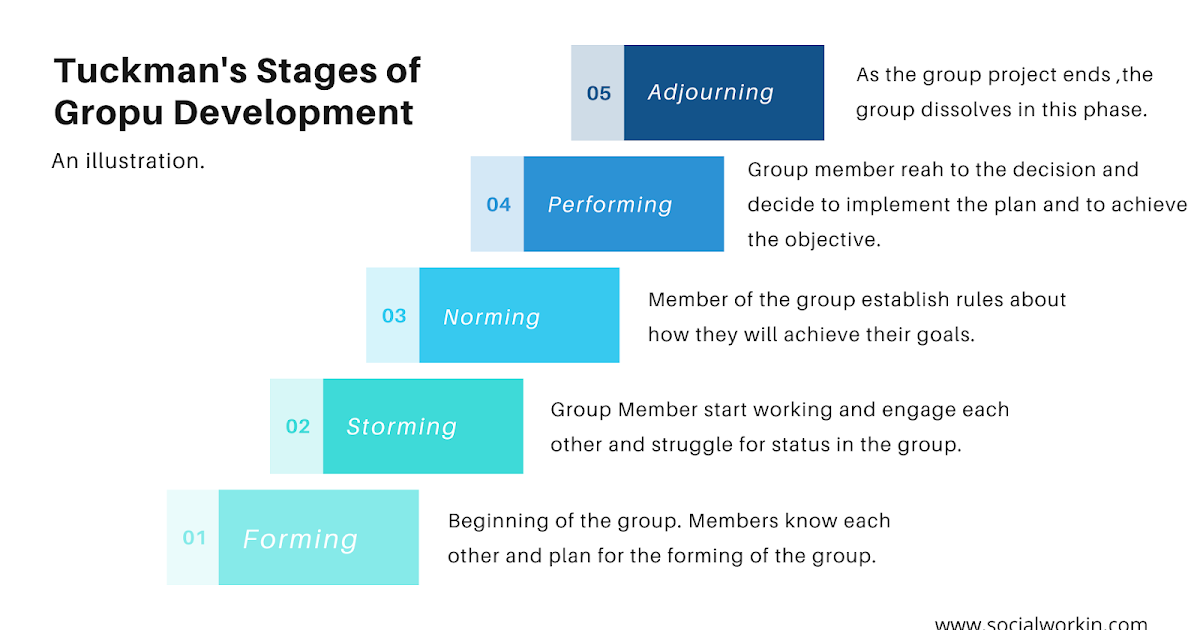
They’ll also get some practice with synonyms — this may not be intentional practice, though. During those moments when they aren’t sure how to spell a new word, they may rely on words they’re already comfortable with!
Additionally, your child may demonstrate significant progress with hearing sounds and matching them with letters, especially when attempting to spell a word for the first time. It’s normal for them to run into hiccups. For example, they may spell “surprise” as “suprize.”
Using all of the different learning methods they’ve accumulated over the course of the other stages of spelling development will help get them where they need to go!
Correct Stage
The final stage of spelling development is the correct stage. At this point, your child fully comprehends the basic rules and patterns of English spelling.
They can handle books at their reading level on their own and have a comfortable vocabulary of words that they consistently spell correctly.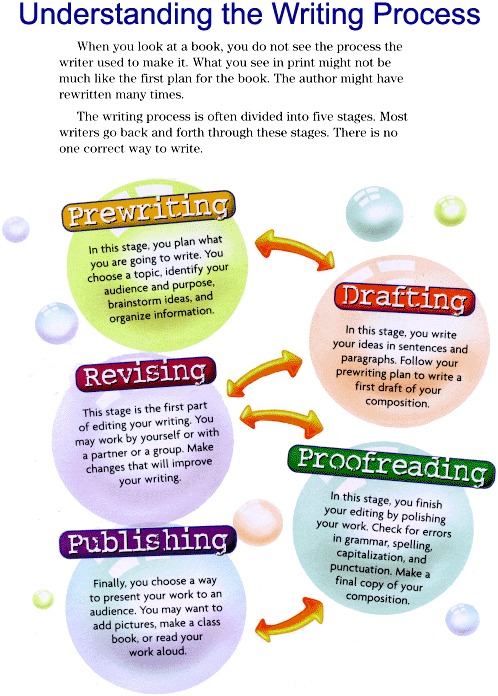
More often than not, your child can correctly assume how words are spelled after hearing them read aloud. They know how to tackle silent vowels and consonants, irregularly spelled words, and other tricky spelling tasks.
They also have the power to recognize and correct their own spelling mistakes. With a larger and more advanced vocabulary, kids in this stage are more expressive, more accurate, and more entrenched in reading than ever before!
Activities For Each Stage Of Spelling Development
Precommunicative Stage Spellers
Games that encourage an interest in learning letters and letter-sounds are great for motivating your precommunicative stage speller.
Refrigerator-magnet letters are handy for young children working through this stage. You can play scavenger hunts with them or create “pits” of letters where they try to find the letter that matches the letter sound you make.
They can also “feed” letters to their stuffed animals. You can say, “Mr. Crocodile is hungry for the /k/ sound today!” and assist them with giving the animal all the Ks in their collection.
Crocodile is hungry for the /k/ sound today!” and assist them with giving the animal all the Ks in their collection.
Alphabet puzzles that focus on letter-sound correspondence, singing the alphabet song, and other singalongs can also set your child up for a fun learning adventure that’s only just beginning!
Keeping lots of paper and crayons around will also encourage them to “write” and “draw” stories. If your child shows you something they just worked on, ask them to tell you about what they wrote.
Semiphonetic Stage Spellers
In this stage, you’ll continue to emphasize letter-sound correspondence activities to assist your child’s phonological skills. You can utilize the activities we mentioned above or explore some other letter-sound correspondence activities!
Phonetic Stage Spellers
Your child’s letter-sound correspondence practice will pay off as they move onto the phonetic stage of spelling.
There are tons of phonics games out there — including plenty on our very own Learn & Grow app — and the most successful ones will reinforce your child’s comfort level with phonetic spelling.
Rhyming games, for example, are an excellent way to sharpen their phonics spelling skills. You can play a “wrong word” game together.
First, you’ll start by thinking of a “rhyming” sound to focus on. For our example, we’ll use the /at/ sound. Next, tell your child three words. The catch is that one of the words doesn’t fit (rhyme) and they need to find the wrong word.
You can say, “cat, bat, and mug.” Then ask your child which word doesn’t fit. They’re sure to burst into a fit of giggles for your silly rhyming mistakes!
You might take a moment to spell out the rhyming sound so your child knows how to spell the sound they’re listening for.
Transitional Stage Spellers
For transitional spellers, the games can be kicked up a notch. You can begin to explore sight word games with your child, as well as test their knowledge of the words they already know!
One idea would be to host a fake spelling bee. You can go first to showcase how it’s done. You’ll begin to spell a word for your child.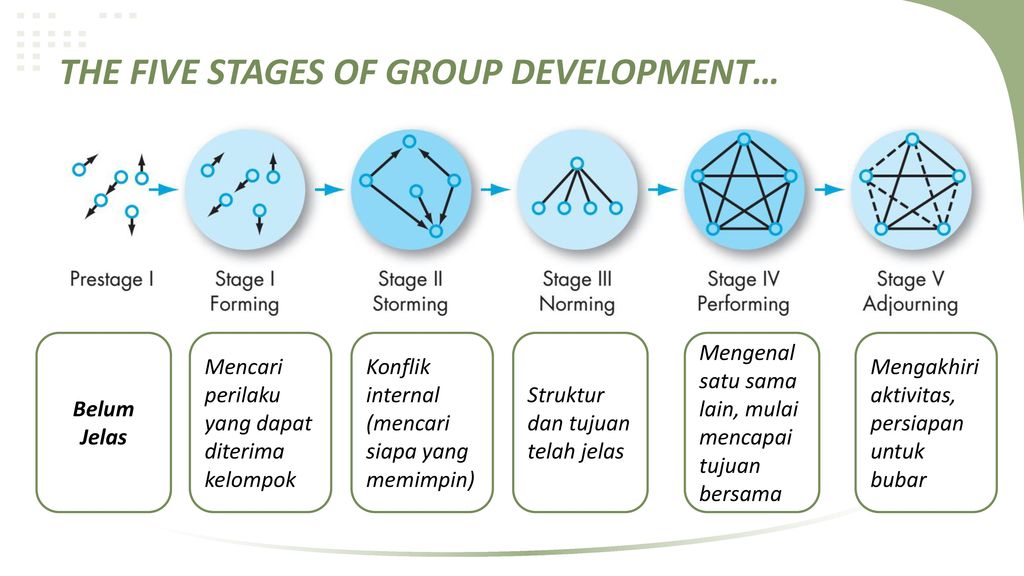 If you spell it wrong, they have to yell “WRONG!” and then “steal” your turn by spelling it correctly.
If you spell it wrong, they have to yell “WRONG!” and then “steal” your turn by spelling it correctly.
If they spell it correctly, they get a point. If they said you spelled it wrong but you were actually correct, they lose a point.
If your child doesn’t like the pressure of spelling out loud just yet, you can play a game with a ball instead. In this game, you’ll hold up two cards with alternate spellings of the same word.
Your child’s goal is to identify the correct spelling and throw the ball at that card. For every correct answer, they get a point. Don’t forget the grand prize at the end!
Correct Stage Spellers
Once your child reaches the final milestone in the stages of spelling development, you can turn to more challenging games. And there are some classic spelling games that just can’t be beaten.
For our example, we love Scrabble! It’s a celebration of spelling in and of itself! We love it for the opportunities it provides to have a blast while practicing your child’s spelling skills at the same time.
Other great games that help with spelling include Hangman, Boggle, and Bananagrams. The possibilities are endless when it comes to spelling and fun!
Mastering The Stages Of Spelling Development Takes Time
No matter what stage of spelling development your child is currently in, it takes time and patience for them to move through the different stages. But we know with lots of love and encouragement, they’ll get there before you know it.
And for those days you need a little helping hand to work with your child on their spelling development, our HOMER Learn & Grow App is ready to assist! It’s packed with personalized lessons for your child.
They’ll go at their own pace while learning how to spell — all while having a blast!
Author
5 Stages of Spelling Development
Posts on Happily Homegrown contain affiliate links. When you make a purchase through an affiliate link, your price will be the same, but Happily Homegrown will receive a small commission. Thank you for your support!
Thank you for your support!
Just like so many things in our children’s lives, learning spelling is developmental. Once you know what the developmental levels are, and what level your child is on, you no longer have to worry about if they are behind or right where they need to be.
When we have our children, it begins. The constant comparison to other children. From who is holding their head on their own, to who is sleeping through the night. Eventually, that turns into who is reading at what grade level and when. Comparison seems to be the name of the game for a lot of parents.
The truth is, just like all of those adorable first milestones are developmental and they will come in time, the same is true for spelling ability. I don’t understand why so many people (both parents and educators) think some magic switch gets thrown at 5 years old making the child ready for school and for formal academics!
We’ve talked before about how reading and literacy is developmental and most children aren’t entirely ready to read until they are about 7 or 8 years old, but some are as old as 9 or 10.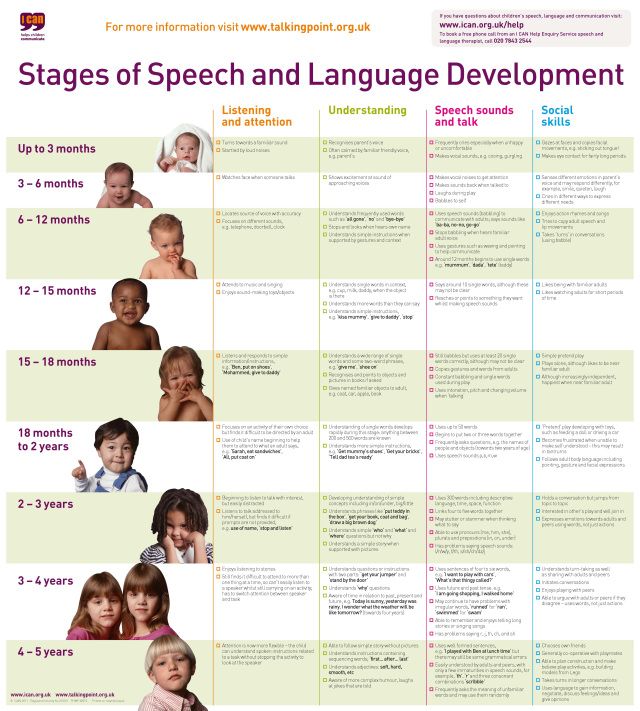 The same is true for spelling. There are actually five stages of spelling development: Emergent Spelling, Letter Name Spelling, Within-Word Pattern Spelling, Syllables Juncture Spelling, and Derivational Constancy Spelling.
The same is true for spelling. There are actually five stages of spelling development: Emergent Spelling, Letter Name Spelling, Within-Word Pattern Spelling, Syllables Juncture Spelling, and Derivational Constancy Spelling.
Emergent Spelling
This stage is typical of children who are 3-5 years old. During the Emergent stage, children learn to make the distinction between drawing and writing. You may notice that your child will show you a piece of paper with scribbles on it and then tell you what it says. This is very early spelling even though there may not be a single letter on the page. Children in this stage then learn how to make letters and distinguish between them. They will learn which direction you write on a page (left to right, top to bottom). They will also begin early phonemic awareness, recognizing that certain letters make certain sounds. By the end of this stage, children are realizing that letters represent sounds in words.
Letter Name Spelling
This stage is typical for children who are 4-9 years old.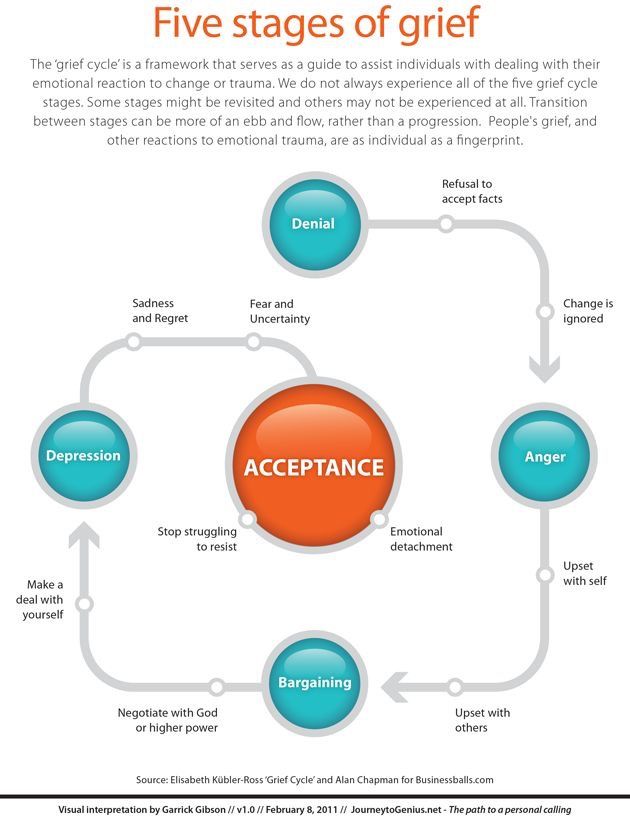 This wide five-year span confirms that not all children will learn at the same pace. During the Letter Name stage, children begin to represent the phonemes in words with letters. Early Letter Name spellers, may often write only a few of the strongest phonemes to represent the word. Children at the beginning of this stage my write D for dog, or KE for cookie, identifying only the strongest sounds in the word. This “kid writing” or “kid spelling” as it is often called is developmental and so important for our young learners.
This wide five-year span confirms that not all children will learn at the same pace. During the Letter Name stage, children begin to represent the phonemes in words with letters. Early Letter Name spellers, may often write only a few of the strongest phonemes to represent the word. Children at the beginning of this stage my write D for dog, or KE for cookie, identifying only the strongest sounds in the word. This “kid writing” or “kid spelling” as it is often called is developmental and so important for our young learners.
As learners move through this stage of spelling development, they will begin using the beginning and ending consonants in most words and will begin to include a vowel in each syllable. They will learn word families and can spell multiple words, even those unfamiliar to them, using the patterns they recognize from the word families.
Within Words Spelling
This stage is typical for children who are 6-12 years old. Learners have moved on to the Within Words stage of spelling when they can spell most single-syllable, short-vowel words correctly.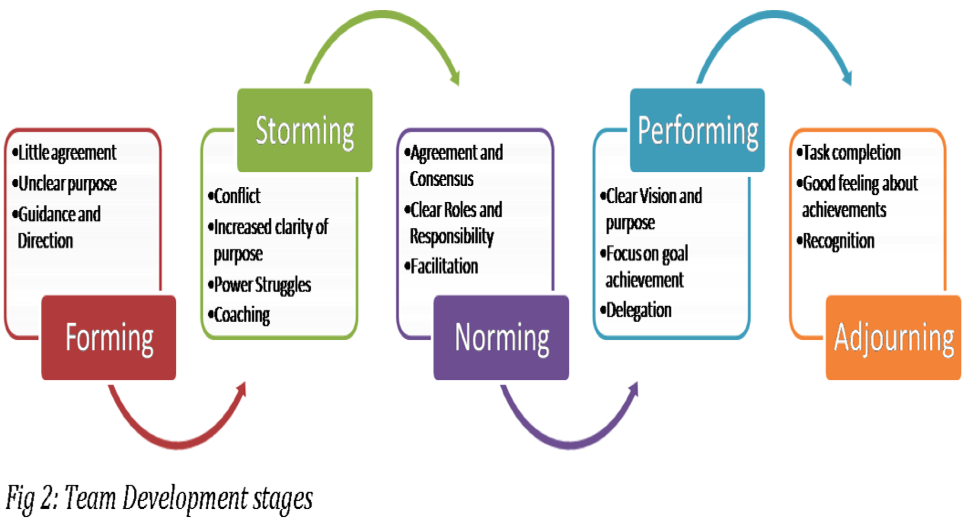 During this stage of spelling development, children will learn long vowel sounds and patterns in single-syllable words. They will also learn more complex consonant patterns containing three letters (for example -tch as in watch), as well as less common vowel patterns. Learners will also become aware of homophones. By the end of this stage, children can read and write many words correctly because of their knowledge of letter sounds and short-vowel patterns.
During this stage of spelling development, children will learn long vowel sounds and patterns in single-syllable words. They will also learn more complex consonant patterns containing three letters (for example -tch as in watch), as well as less common vowel patterns. Learners will also become aware of homophones. By the end of this stage, children can read and write many words correctly because of their knowledge of letter sounds and short-vowel patterns.
Syllable Juncture Spelling
This stage is typical for children who are 8-12 years old. During this stage, children take what they know about letter sounds and short-vowel patterns and apply it to multi-syllable words. They will also learn inflectional endings (-ed, -ing, -s, -es), and rules about doubling consonants, changing the y to an i, or dropping the final e before adding suffixes to words. Homophones and compound are also taught during this stage of spelling development. Additional prefixes and suffixes are also introduced to students.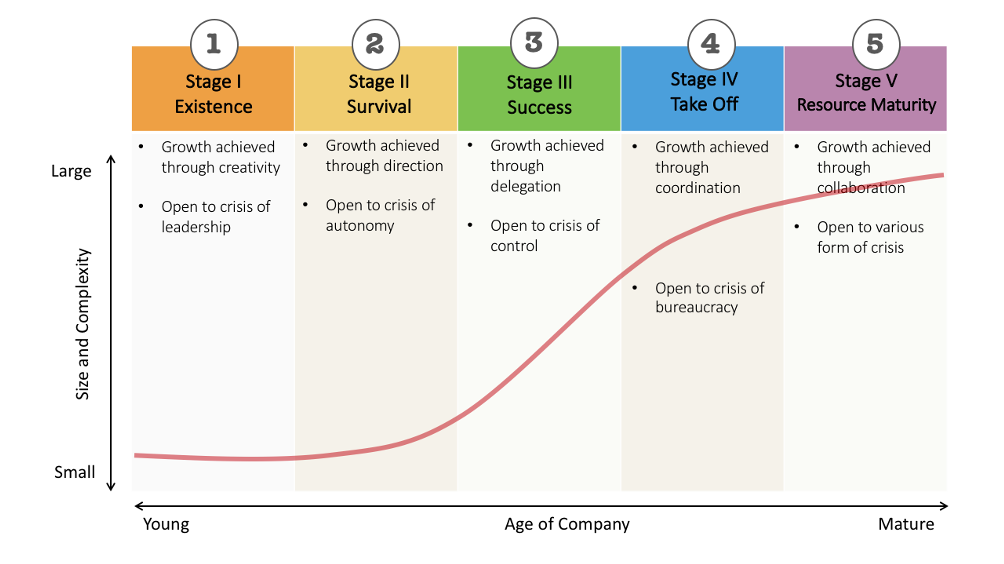
Derivational Constancy Spelling
This stage is typical for children who are 10 years old or older. During this stage, children learn that meaning, as well as patterns and sound, are important in spelling words in the English language. Greek and Latin roots and affixes are taught, bringing a level of vocabulary study into the spelling lessons. Learners explore the relationship between spelling and meaning and learn to associate word meaning even when vowel sounds change from the root word (for example wise – wisdom). This is the final stage of spelling development continues through adulthood with how we continue to learn new words and language.
Children’s spelling ability is developmental and you can not force a child to move from one stage to another with rote memorization or skill and drill practices. Many spelling programs that are used today are very good with following the early developmental stages of spelling, which is great for 1st and 2nd grade students. Unfortunately, classroom teachers are often told which resource they must use at each grade level, so come 3rd grade students may have a spelling list that is outside. Some schools allow for teachers to differentiate instruction for all learners using whatever resources they believe are necessary.
Unfortunately, classroom teachers are often told which resource they must use at each grade level, so come 3rd grade students may have a spelling list that is outside. Some schools allow for teachers to differentiate instruction for all learners using whatever resources they believe are necessary.
Luckily, during my classroom teaching experience, I worked in two school districts that allowed the classroom teacher to differentiate spelling for each student in our class. Over the next several posts, I will share what I used for teaching developmental spelling in public school, and what I use to teach developmental spelling now in our homeschool.
Development of teacher's professional competence: theory and practice
%PDF-1.5 % 10 obj > >> /PageLayout /OneColumn /PageMode /UseNone /Pages 6 0 R /Type /Catalog >> endobj 70 obj /CreationDate (D:20130305124535+06'00') /Producer (doPDF Ver 7.2 Build 376 \(Windows 7 Business Edition - Version: 6.1.7600 \(x86\)\)) /Title >> endobj 20 obj > stream
 A.1.5doPDF Ver 7.2 Build 376 (Windows 7 Business Edition - Version: 6.1.7600 (x86))2013-03-05T12:45:35+06:00 endstream endobj 3 0 obj > endobj 40 obj > endobj 5 0 obj > endobj 6 0 obj > endobj 80 obj > /ProcSet[/PDF/Text] /XObject> >> /Type /Page /Annots [255 0 R] >> endobj 90 obj > /ProcSet[/PDF/Text] >> /Type /Page >> endobj 10 0 obj > /ProcSet[/PDF/Text] >> /Type /Page >> endobj 11 0 obj > /ProcSet[/PDF/Text] >> /Type /Page >> endobj 12 0 obj > /ProcSet[/PDF/Text] >> /Type /Page >> endobj 13 0 obj > /ProcSet[/PDF/Text] >> /Type /Page >> endobj 14 0 obj > /ProcSet[/PDF/Text] >> /Type /Page >> endobj 15 0 obj > /ProcSet[/PDF/Text] >> /Type /Page >> endobj 16 0 obj > /ProcSet[/PDF/Text] >> /Type /Page >> endobj 17 0 obj > /ProcSet[/PDF/Text] >> /Type /Page >> endobj 18 0 obj > /ProcSet[/PDF/Text] >> /Type /Page >> endobj 190 obj > /ProcSet[/PDF/Text] >> /Type /Page >> endobj 20 0 obj > /ProcSet[/PDF/Text] >> /Type /Page >> endobj 21 0 obj > /ProcSet[/PDF/Text] >> /Type /Page >> endobj 22 0 obj > /ProcSet[/PDF/Text] >> /Type /Page >> endobj 23 0 obj > /ProcSet[/PDF/Text] >> /Type /Page >> endobj 24 0 obj > /ProcSet[/PDF/Text] >> /Type /Page >> endobj 25 0 obj > /ProcSet[/PDF/Text] >> /Type /Page >> endobj 26 0 obj > /ProcSet[/PDF/Text] >> /Type /Page >> endobj 27 0 obj > /ProcSet[/PDF/Text] >> /Type /Page >> endobj 28 0 obj > /ProcSet[/PDF/Text] >> /Type /Page >> endobj 290 obj > /ProcSet[/PDF/Text] >> /Type /Page >> endobj 30 0 obj > /ProcSet[/PDF/Text] >> /Type /Page >> endobj 31 0 obj > /ProcSet[/PDF/Text] >> /Type /Page >> endobj 32 0 obj > /ProcSet[/PDF/Text] >> /Type /Page >> endobj 33 0 obj > /ProcSet[/PDF/Text] >> /Type /Page >> endobj 34 0 obj > /ProcSet[/PDF/Text] >> /Type /Page >> endobj 35 0 obj > /ProcSet[/PDF/Text] >> /Type /Page >> endobj 36 0 obj > /ProcSet[/PDF/Text] >> /Type /Page >> endobj 37 0 obj > /ProcSet[/PDF/Text] >> /Type /Page >> endobj 38 0 obj > /ProcSet[/PDF/Text] >> /Type /Page >> endobj 390 obj > /ProcSet[/PDF/Text] >> /Type /Page >> endobj 40 0 obj > /ProcSet[/PDF/Text] >> /Type /Page >> endobj 41 0 obj > /ProcSet[/PDF/Text] >> /Type /Page >> endobj 42 0 obj > /ProcSet[/PDF/Text] >> /Type /Page >> endobj 43 0 obj > /ProcSet[/PDF/Text] >> /Type /Page >> endobj 44 0 obj > /ProcSet[/PDF/Text] >> /Type /Page >> endobj 45 0 obj > /ProcSet[/PDF/Text] >> /Type /Page >> endobj 46 0 obj > /ProcSet[/PDF/Text] >> /Type /Page >> endobj 47 0 obj > /ProcSet[/PDF/Text] >> /Type /Page >> endobj 48 0 obj > /ProcSet[/PDF/Text] >> /Type /Page >> endobj 490 obj > /ProcSet[/PDF/Text] >> /Type /Page >> endobj 50 0 obj > /ProcSet[/PDF/Text] >> /Type /Page >> endobj 51 0 obj > /ProcSet[/PDF/Text] >> /Type /Page >> endobj 52 0 obj > /ProcSet[/PDF/Text] >> /Type /Page >> endobj 53 0 obj > /ProcSet[/PDF/Text] >> /Type /Page >> endobj 54 0 obj > /ProcSet[/PDF/Text] >> /Type /Page >> endobj 55 0 obj > /ProcSet[/PDF/Text] >> /Type /Page >> endobj 56 0 obj > /ProcSet[/PDF/Text] >> /Type /Page >> endobj 57 0 obj > /ProcSet[/PDF/Text] >> /Type /Page >> endobj 58 0 obj > /ProcSet[/PDF/Text] >> /Type /Page >> endobj 590 obj > /ProcSet[/PDF/Text] >> /Type /Page >> endobj 60 0 obj > /ProcSet[/PDF/Text] >> /Type /Page >> endobj 61 0 obj > /ProcSet[/PDF/Text] >> /Type /Page >> endobj 62 0 obj > /ProcSet[/PDF/Text] >> /Type /Page >> endobj 63 0 obj > /ProcSet[/PDF/Text] >> /Type /Page >> endobj 64 0 obj > /ProcSet[/PDF/Text] >> /Type /Page >> endobj 65 0 obj > /ProcSet[/PDF/Text] >> /Type /Page >> endobj 66 0 obj > /ProcSet[/PDF/Text] >> /Type /Page >> endobj 67 0 obj > /ProcSet[/PDF/Text] >> /Type /Page >> endobj 68 0 obj > /ProcSet[/PDF/Text] >> /Type /Page >> endobj 690 obj > /ProcSet[/PDF/Text] >> /Type /Page >> endobj 70 0 obj > /ProcSet[/PDF/Text] >> /Type /Page >> endobj 71 0 obj > /ProcSet[/PDF/Text] >> /Type /Page >> endobj 72 0 obj > /ProcSet[/PDF/Text] >> /Type /Page >> endobj 73 0 obj > /ProcSet[/PDF/Text] >> /Type /Page >> endobj 74 0 obj > /ProcSet[/PDF/Text] >> /Type /Page >> endobj 75 0 obj > /ProcSet[/PDF/Text] >> /Type /Page >> endobj 76 0 obj > /ProcSet[/PDF/Text] >> /Type /Page >> endobj 77 0 obj > /ProcSet[/PDF/Text] >> /Type /Page >> endobj 78 0 obj > /ProcSet[/PDF/Text] >> /Type /Page >> endobj 790 obj > /ProcSet[/PDF/Text] >> /Type /Page >> endobj 80 0 obj > /ProcSet[/PDF/Text] >> /Type /Page >> endobj 81 0 obj > /ProcSet[/PDF/Text] >> /Type /Page >> endobj 82 0 obj > /ProcSet[/PDF/Text] >> /Type /Page >> endobj 83 0 obj > /ProcSet[/PDF/Text] >> /Type /Page >> endobj 84 0 obj > /ProcSet[/PDF/Text] >> /Type /Page >> endobj 85 0 obj > /ProcSet[/PDF/Text] >> /Type /Page >> endobj 86 0 obj > /ProcSet[/PDF/Text] >> /Type /Page >> endobj 87 0 obj > /ProcSet[/PDF/Text] >> /Type /Page >> endobj 88 0 obj > /ProcSet[/PDF/Text] >> /Type /Page >> endobj 890 obj > /ProcSet[/PDF/Text] >> /Type /Page >> endobj 90 0 obj > /ProcSet[/PDF/Text] >> /Type /Page >> endobj 91 0 obj > /ProcSet[/PDF/Text] >> /Type /Page >> endobj 92 0 obj > /ProcSet[/PDF/Text] >> /Type /Page >> endobj 93 0 obj > /ProcSet[/PDF/Text] >> /Type /Page >> endobj 94 0 obj > /ProcSet[/PDF/Text] >> /Type /Page >> endobj 95 0 obj > /ProcSet[/PDF/Text] >> /Type /Page >> endobj 96 0 obj > /ProcSet[/PDF/Text] >> /Type /Page >> endobj 97 0 obj > /ProcSet[/PDF/Text] >> /Type /Page >> endobj 98 0 obj > /ProcSet[/PDF/Text] >> /Type /Page >> endobj 99 0 obj > /ProcSet[/PDF/Text] >> /Type /Page >> endobj 100 0 obj > /ProcSet[/PDF/Text] >> /Type /Page >> endobj 101 0 obj > /ProcSet[/PDF/Text] >> /Type /Page >> endobj 102 0 obj > /ProcSet[/PDF/Text] >> /Type /Page >> endobj 103 0 obj > /ProcSet[/PDF/Text] >> /Type /Page >> endobj 104 0 obj > /ProcSet[/PDF/Text] >> /Type /Page >> endobj 105 0 obj > /ProcSet[/PDF/Text] >> /Type /Page >> endobj 106 0 obj > /ProcSet[/PDF/Text] >> /Type /Page >> endobj 107 0 obj > /ProcSet[/PDF/Text] >> /Type /Page >> endobj 108 0 obj > /ProcSet[/PDF/Text] >> /Type /Page >> endobj 1090 obj > /ProcSet[/PDF/Text] >> /Type /Page >> endobj 110 0 obj > /ProcSet[/PDF/Text] >> /Type /Page >> endobj 111 0 obj > /ProcSet[/PDF/Text] >> /Type /Page >> endobj 112 0 obj > /ProcSet[/PDF/Text] >> /Type /Page >> endobj 113 0 obj > /ProcSet[/PDF/Text] >> /Type /Page >> endobj 114 0 obj > /ProcSet[/PDF/Text] >> /Type /Page >> endobj 115 0 obj > /ProcSet[/PDF/Text] >> /Type /Page >> endobj 116 0 obj > /ProcSet[/PDF/Text] >> /Type /Page >> endobj 117 0 obj > /ProcSet[/PDF/Text] >> /Type /Page >> endobj 118 0 obj > /ProcSet[/PDF/Text] >> /Type /Page >> endobj 1190 obj > /ProcSet[/PDF/Text] >> /Type /Page >> endobj 120 0 obj > /ProcSet[/PDF/Text] >> /Type /Page >> endobj 121 0 obj > /ProcSet[/PDF/Text] >> /Type /Page >> endobj 122 0 obj > /ProcSet[/PDF/Text] >> /Type /Page >> endobj 123 0 obj > /ProcSet[/PDF/Text] >> /Type /Page >> endobj 124 0 obj > /ProcSet[/PDF/Text] >> /Type /Page >> endobj 125 0 obj > /ProcSet[/PDF/Text] >> /Type /Page >> endobj 126 0 obj > /ProcSet[/PDF/Text] >> /Type /Page >> endobj 127 0 obj > /ProcSet[/PDF/Text] >> /Type /Page >> endobj 128 0 obj > /ProcSet[/PDF/Text] >> /Type /Page >> endobj 1290 obj > /ProcSet[/PDF/Text] >> /Type /Page >> endobj 130 0 obj > /ProcSet[/PDF/Text] >> /Type /Page >> endobj 131 0 obj > /ProcSet[/PDF/Text] >> /Type /Page >> endobj 132 0 obj > /ProcSet[/PDF/Text] >> /Type /Page >> endobj 133 0 obj > /ProcSet[/PDF/Text] >> /Type /Page >> endobj 134 0 obj > /ProcSet[/PDF/Text] >> /Type /Page >> endobj 135 0 obj > /ProcSet[/PDF/Text] >> /Type /Page >> endobj 136 0 obj > /ProcSet[/PDF/Text] >> /Type /Page >> endobj 137 0 obj > /ProcSet[/PDF/Text] >> /Type /Page >> endobj 138 0 obj > /ProcSet[/PDF/Text] >> /Type /Page >> endobj 1390 obj > /ProcSet[/PDF/Text] >> /Type /Page >> endobj 140 0 obj > /ProcSet[/PDF/Text] >> /Type /Page >> endobj 141 0 obj > /ProcSet[/PDF/Text] >> /Type /Page >> endobj 142 0 obj > /ProcSet[/PDF/Text] >> /Type /Page >> endobj 143 0 obj > /ProcSet[/PDF/Text] >> /Type /Page >> endobj 144 0 obj > /ProcSet[/PDF/Text] >> /Type /Page >> endobj 145 0 obj > /ProcSet[/PDF/Text] >> /Type /Page >> endobj 146 0 obj > /ProcSet[/PDF/Text] >> /Type /Page >> endobj 147 0 obj > /ProcSet[/PDF/Text] >> /Type /Page >> endobj 148 0 obj > /ProcSet[/PDF/Text] >> /Type /Page >> endobj 1490 obj > /ProcSet[/PDF/Text] >> /Type /Page >> endobj 150 0 obj > /ProcSet[/PDF/Text] >> /Type /Page >> endobj 151 0 obj > /ProcSet[/PDF/Text] >> /Type /Page >> endobj 152 0 obj > /ProcSet[/PDF/Text] >> /Type /Page >> endobj 153 0 obj > /ProcSet[/PDF/Text] >> /Type /Page >> endobj 154 0 obj > /ProcSet[/PDF/Text] >> /Type /Page >> endobj 155 0 obj > /ProcSet[/PDF/Text] >> /Type /Page >> endobj 156 0 obj > /ProcSet[/PDF/Text] >> /Type /Page >> endobj 157 0 obj > /ProcSet[/PDF/Text] >> /Type /Page >> endobj 158 0 obj > /ProcSet[/PDF/Text] >> /Type /Page >> endobj 1590 obj > /ProcSet[/PDF/Text] >> /Type /Page >> endobj 160 0 obj > /ProcSet[/PDF/Text] >> /Type /Page >> endobj 161 0 obj > /ProcSet[/PDF/Text] >> /Type /Page >> endobj 162 0 obj > /ProcSet[/PDF/Text] >> /Type /Page >> endobj 163 0 obj > /ProcSet[/PDF/Text] >> /Type /Page >> endobj 164 0 obj > /ProcSet[/PDF/Text] >> /Type /Page >> endobj 165 0 obj > /ProcSet[/PDF/Text] >> /Type /Page >> endobj 166 0 obj > /ProcSet[/PDF/Text] >> /Type /Page >> endobj 167 0 obj > /ProcSet[/PDF/Text] >> /Type /Page >> endobj 168 0 obj > /ProcSet[/PDF/Text] >> /Type /Page >> endobj 1690 obj > /ProcSet[/PDF/Text] >> /Type /Page >> endobj 170 0 obj > /ProcSet[/PDF/Text] >> /Type /Page >> endobj 171 0 obj > /ProcSet[/PDF/Text] >> /Type /Page >> endobj 172 0 obj > /ProcSet[/PDF/Text] >> /Type /Page >> endobj 173 0 obj > /ProcSet[/PDF/Text] >> /Type /Page >> endobj 174 0 obj > /ProcSet[/PDF/Text] >> /Type /Page >> endobj 175 0 obj > /ProcSet[/PDF/Text] >> /Type /Page >> endobj 176 0 obj > /ProcSet[/PDF/Text] >> /Type /Page >> endobj 177 0 obj > /ProcSet[/PDF/Text] >> /Type /Page >> endobj 178 0 obj > /ProcSet[/PDF/Text] >> /Type /Page >> endobj 1790 obj > /ProcSet[/PDF/Text] >> /Type /Page >> endobj 180 0 obj > /ProcSet[/PDF/Text] >> /Type /Page >> endobj 181 0 obj > /ProcSet[/PDF/Text] >> /Type /Page >> endobj 182 0 obj > /ProcSet[/PDF/Text] >> /Type /Page >> endobj 183 0 obj > /ProcSet[/PDF/Text] >> /Type /Page >> endobj 184 0 obj > /ProcSet[/PDF/Text] >> /Type /Page >> endobj 185 0 obj > /ProcSet[/PDF/Text] >> /Type /Page >> endobj 186 0 obj > /ProcSet[/PDF/Text] >> /Type /Page >> endobj 187 0 obj > /ProcSet[/PDF/Text] >> /Type /Page >> endobj 188 0 obj > /ProcSet[/PDF/Text] >> /Type /Page >> endobj 1890 obj > /ProcSet[/PDF/Text] >> /Type /Page >> endobj 190 0 obj > /ProcSet[/PDF/Text] >> /Type /Page >> endobj 191 0 obj > /ProcSet[/PDF/Text] >> /Type /Page >> endobj 192 0 obj > /ProcSet[/PDF/Text] >> /Type /Page >> endobj 193 0 obj > /ProcSet[/PDF/Text] >> /Type /Page >> endobj 194 0 obj > /ProcSet[/PDF/Text] >> /Type /Page >> endobj 195 0 obj > /ProcSet[/PDF/Text] >> /Type /Page >> endobj 196 0 obj > /ProcSet[/PDF/Text] >> /Type /Page >> endobj 197 0 obj > /ProcSet[/PDF/Text] >> /Type /Page >> endobj 198 0 obj > /ProcSet[/PDF/Text] >> /Type /Page >> endobj 199 0 obj > /ProcSet[/PDF/Text] >> /Type /Page >> endobj 200 0 obj > /ProcSet[/PDF/Text] >> /Type /Page >> endobj 201 0 obj > /ProcSet[/PDF/Text] >> /Type /Page >> endobj 202 0 obj > /ProcSet[/PDF/Text] >> /Type /Page >> endobj 203 0 obj > /ProcSet[/PDF/Text] >> /Type /Page >> endobj 204 0 obj > /ProcSet[/PDF/Text] >> /Type /Page >> endobj 205 0 obj > /ProcSet[/PDF/Text] >> /Type /Page >> endobj 206 0 obj > /ProcSet[/PDF/Text] >> /Type /Page >> endobj 207 0 obj > /ProcSet[/PDF/Text] >> /Type /Page >> endobj 208 0 obj > /ProcSet[/PDF/Text] >> /Type /Page >> endobj 2090 obj > /ProcSet[/PDF/Text] >> /Type /Page >> endobj 210 0 obj > /ProcSet[/PDF/Text] >> /Type /Page >> endobj 211 0 obj > /ProcSet[/PDF/Text] >> /Type /Page >> endobj 212 0 obj > /ProcSet[/PDF/Text] >> /Type /Page >> endobj 213 0 obj > /ProcSet[/PDF/Text] >> /Type /Page >> endobj 214 0 obj > /ProcSet[/PDF/Text] >> /Type /Page >> endobj 215 0 obj > /ProcSet[/PDF/Text] >> /Type /Page >> endobj 216 0 obj > /ProcSet[/PDF/Text] >> /Type /Page >> endobj 217 0 obj > /ProcSet[/PDF/Text] >> /Type /Page >> endobj 218 0 obj > /ProcSet[/PDF/Text] >> /Type /Page >> endobj 2190 obj > /ProcSet[/PDF/Text] >> /Type /Page >> endobj 220 0 obj > /ProcSet[/PDF/Text] >> /Type /Page >> endobj 221 0 obj > /ProcSet[/PDF/Text] >> /Type /Page >> endobj 222 0 obj > /ProcSet[/PDF/Text] >> /Type /Page >> endobj 223 0 obj > /ProcSet[/PDF/Text] >> /Type /Page >> endobj 224 0 obj > /ProcSet[/PDF/Text] >> /Type /Page >> endobj 225 0 obj > /ProcSet[/PDF/Text] >> /Type /Page >> endobj 226 0 obj > /ProcSet[/PDF/Text] >> /Type /Page >> endobj 227 0 obj > /ProcSet[/PDF/Text] >> /Type /Page >> endobj 228 0 obj > /ProcSet[/PDF/Text] >> /Type /Page >> endobj 2290 obj > /ProcSet[/PDF/Text] >> /Type /Page >> endobj 230 0 obj > /ProcSet[/PDF/Text] >> /Type /Page >> endobj 231 0 obj > /ProcSet[/PDF/Text] >> /Type /Page >> endobj 232 0 obj > /ProcSet[/PDF/Text] >> /Type /Page >> endobj 233 0 obj > /ProcSet[/PDF/Text] >> /Type /Page >> endobj 234 0 obj > /ProcSet[/PDF/Text] >> /Type /Page >> endobj 235 0 obj > /ProcSet[/PDF/Text] >> /Type /Page >> endobj 236 0 obj > /ProcSet[/PDF/Text] >> /Type /Page >> endobj 237 0 obj > /ProcSet[/PDF/Text] >> /Type /Page >> endobj 238 0 obj > /ProcSet[/PDF/Text] >> /Type /Page >> endobj 239ċ9`"vS0.
A.1.5doPDF Ver 7.2 Build 376 (Windows 7 Business Edition - Version: 6.1.7600 (x86))2013-03-05T12:45:35+06:00 endstream endobj 3 0 obj > endobj 40 obj > endobj 5 0 obj > endobj 6 0 obj > endobj 80 obj > /ProcSet[/PDF/Text] /XObject> >> /Type /Page /Annots [255 0 R] >> endobj 90 obj > /ProcSet[/PDF/Text] >> /Type /Page >> endobj 10 0 obj > /ProcSet[/PDF/Text] >> /Type /Page >> endobj 11 0 obj > /ProcSet[/PDF/Text] >> /Type /Page >> endobj 12 0 obj > /ProcSet[/PDF/Text] >> /Type /Page >> endobj 13 0 obj > /ProcSet[/PDF/Text] >> /Type /Page >> endobj 14 0 obj > /ProcSet[/PDF/Text] >> /Type /Page >> endobj 15 0 obj > /ProcSet[/PDF/Text] >> /Type /Page >> endobj 16 0 obj > /ProcSet[/PDF/Text] >> /Type /Page >> endobj 17 0 obj > /ProcSet[/PDF/Text] >> /Type /Page >> endobj 18 0 obj > /ProcSet[/PDF/Text] >> /Type /Page >> endobj 190 obj > /ProcSet[/PDF/Text] >> /Type /Page >> endobj 20 0 obj > /ProcSet[/PDF/Text] >> /Type /Page >> endobj 21 0 obj > /ProcSet[/PDF/Text] >> /Type /Page >> endobj 22 0 obj > /ProcSet[/PDF/Text] >> /Type /Page >> endobj 23 0 obj > /ProcSet[/PDF/Text] >> /Type /Page >> endobj 24 0 obj > /ProcSet[/PDF/Text] >> /Type /Page >> endobj 25 0 obj > /ProcSet[/PDF/Text] >> /Type /Page >> endobj 26 0 obj > /ProcSet[/PDF/Text] >> /Type /Page >> endobj 27 0 obj > /ProcSet[/PDF/Text] >> /Type /Page >> endobj 28 0 obj > /ProcSet[/PDF/Text] >> /Type /Page >> endobj 290 obj > /ProcSet[/PDF/Text] >> /Type /Page >> endobj 30 0 obj > /ProcSet[/PDF/Text] >> /Type /Page >> endobj 31 0 obj > /ProcSet[/PDF/Text] >> /Type /Page >> endobj 32 0 obj > /ProcSet[/PDF/Text] >> /Type /Page >> endobj 33 0 obj > /ProcSet[/PDF/Text] >> /Type /Page >> endobj 34 0 obj > /ProcSet[/PDF/Text] >> /Type /Page >> endobj 35 0 obj > /ProcSet[/PDF/Text] >> /Type /Page >> endobj 36 0 obj > /ProcSet[/PDF/Text] >> /Type /Page >> endobj 37 0 obj > /ProcSet[/PDF/Text] >> /Type /Page >> endobj 38 0 obj > /ProcSet[/PDF/Text] >> /Type /Page >> endobj 390 obj > /ProcSet[/PDF/Text] >> /Type /Page >> endobj 40 0 obj > /ProcSet[/PDF/Text] >> /Type /Page >> endobj 41 0 obj > /ProcSet[/PDF/Text] >> /Type /Page >> endobj 42 0 obj > /ProcSet[/PDF/Text] >> /Type /Page >> endobj 43 0 obj > /ProcSet[/PDF/Text] >> /Type /Page >> endobj 44 0 obj > /ProcSet[/PDF/Text] >> /Type /Page >> endobj 45 0 obj > /ProcSet[/PDF/Text] >> /Type /Page >> endobj 46 0 obj > /ProcSet[/PDF/Text] >> /Type /Page >> endobj 47 0 obj > /ProcSet[/PDF/Text] >> /Type /Page >> endobj 48 0 obj > /ProcSet[/PDF/Text] >> /Type /Page >> endobj 490 obj > /ProcSet[/PDF/Text] >> /Type /Page >> endobj 50 0 obj > /ProcSet[/PDF/Text] >> /Type /Page >> endobj 51 0 obj > /ProcSet[/PDF/Text] >> /Type /Page >> endobj 52 0 obj > /ProcSet[/PDF/Text] >> /Type /Page >> endobj 53 0 obj > /ProcSet[/PDF/Text] >> /Type /Page >> endobj 54 0 obj > /ProcSet[/PDF/Text] >> /Type /Page >> endobj 55 0 obj > /ProcSet[/PDF/Text] >> /Type /Page >> endobj 56 0 obj > /ProcSet[/PDF/Text] >> /Type /Page >> endobj 57 0 obj > /ProcSet[/PDF/Text] >> /Type /Page >> endobj 58 0 obj > /ProcSet[/PDF/Text] >> /Type /Page >> endobj 590 obj > /ProcSet[/PDF/Text] >> /Type /Page >> endobj 60 0 obj > /ProcSet[/PDF/Text] >> /Type /Page >> endobj 61 0 obj > /ProcSet[/PDF/Text] >> /Type /Page >> endobj 62 0 obj > /ProcSet[/PDF/Text] >> /Type /Page >> endobj 63 0 obj > /ProcSet[/PDF/Text] >> /Type /Page >> endobj 64 0 obj > /ProcSet[/PDF/Text] >> /Type /Page >> endobj 65 0 obj > /ProcSet[/PDF/Text] >> /Type /Page >> endobj 66 0 obj > /ProcSet[/PDF/Text] >> /Type /Page >> endobj 67 0 obj > /ProcSet[/PDF/Text] >> /Type /Page >> endobj 68 0 obj > /ProcSet[/PDF/Text] >> /Type /Page >> endobj 690 obj > /ProcSet[/PDF/Text] >> /Type /Page >> endobj 70 0 obj > /ProcSet[/PDF/Text] >> /Type /Page >> endobj 71 0 obj > /ProcSet[/PDF/Text] >> /Type /Page >> endobj 72 0 obj > /ProcSet[/PDF/Text] >> /Type /Page >> endobj 73 0 obj > /ProcSet[/PDF/Text] >> /Type /Page >> endobj 74 0 obj > /ProcSet[/PDF/Text] >> /Type /Page >> endobj 75 0 obj > /ProcSet[/PDF/Text] >> /Type /Page >> endobj 76 0 obj > /ProcSet[/PDF/Text] >> /Type /Page >> endobj 77 0 obj > /ProcSet[/PDF/Text] >> /Type /Page >> endobj 78 0 obj > /ProcSet[/PDF/Text] >> /Type /Page >> endobj 790 obj > /ProcSet[/PDF/Text] >> /Type /Page >> endobj 80 0 obj > /ProcSet[/PDF/Text] >> /Type /Page >> endobj 81 0 obj > /ProcSet[/PDF/Text] >> /Type /Page >> endobj 82 0 obj > /ProcSet[/PDF/Text] >> /Type /Page >> endobj 83 0 obj > /ProcSet[/PDF/Text] >> /Type /Page >> endobj 84 0 obj > /ProcSet[/PDF/Text] >> /Type /Page >> endobj 85 0 obj > /ProcSet[/PDF/Text] >> /Type /Page >> endobj 86 0 obj > /ProcSet[/PDF/Text] >> /Type /Page >> endobj 87 0 obj > /ProcSet[/PDF/Text] >> /Type /Page >> endobj 88 0 obj > /ProcSet[/PDF/Text] >> /Type /Page >> endobj 890 obj > /ProcSet[/PDF/Text] >> /Type /Page >> endobj 90 0 obj > /ProcSet[/PDF/Text] >> /Type /Page >> endobj 91 0 obj > /ProcSet[/PDF/Text] >> /Type /Page >> endobj 92 0 obj > /ProcSet[/PDF/Text] >> /Type /Page >> endobj 93 0 obj > /ProcSet[/PDF/Text] >> /Type /Page >> endobj 94 0 obj > /ProcSet[/PDF/Text] >> /Type /Page >> endobj 95 0 obj > /ProcSet[/PDF/Text] >> /Type /Page >> endobj 96 0 obj > /ProcSet[/PDF/Text] >> /Type /Page >> endobj 97 0 obj > /ProcSet[/PDF/Text] >> /Type /Page >> endobj 98 0 obj > /ProcSet[/PDF/Text] >> /Type /Page >> endobj 99 0 obj > /ProcSet[/PDF/Text] >> /Type /Page >> endobj 100 0 obj > /ProcSet[/PDF/Text] >> /Type /Page >> endobj 101 0 obj > /ProcSet[/PDF/Text] >> /Type /Page >> endobj 102 0 obj > /ProcSet[/PDF/Text] >> /Type /Page >> endobj 103 0 obj > /ProcSet[/PDF/Text] >> /Type /Page >> endobj 104 0 obj > /ProcSet[/PDF/Text] >> /Type /Page >> endobj 105 0 obj > /ProcSet[/PDF/Text] >> /Type /Page >> endobj 106 0 obj > /ProcSet[/PDF/Text] >> /Type /Page >> endobj 107 0 obj > /ProcSet[/PDF/Text] >> /Type /Page >> endobj 108 0 obj > /ProcSet[/PDF/Text] >> /Type /Page >> endobj 1090 obj > /ProcSet[/PDF/Text] >> /Type /Page >> endobj 110 0 obj > /ProcSet[/PDF/Text] >> /Type /Page >> endobj 111 0 obj > /ProcSet[/PDF/Text] >> /Type /Page >> endobj 112 0 obj > /ProcSet[/PDF/Text] >> /Type /Page >> endobj 113 0 obj > /ProcSet[/PDF/Text] >> /Type /Page >> endobj 114 0 obj > /ProcSet[/PDF/Text] >> /Type /Page >> endobj 115 0 obj > /ProcSet[/PDF/Text] >> /Type /Page >> endobj 116 0 obj > /ProcSet[/PDF/Text] >> /Type /Page >> endobj 117 0 obj > /ProcSet[/PDF/Text] >> /Type /Page >> endobj 118 0 obj > /ProcSet[/PDF/Text] >> /Type /Page >> endobj 1190 obj > /ProcSet[/PDF/Text] >> /Type /Page >> endobj 120 0 obj > /ProcSet[/PDF/Text] >> /Type /Page >> endobj 121 0 obj > /ProcSet[/PDF/Text] >> /Type /Page >> endobj 122 0 obj > /ProcSet[/PDF/Text] >> /Type /Page >> endobj 123 0 obj > /ProcSet[/PDF/Text] >> /Type /Page >> endobj 124 0 obj > /ProcSet[/PDF/Text] >> /Type /Page >> endobj 125 0 obj > /ProcSet[/PDF/Text] >> /Type /Page >> endobj 126 0 obj > /ProcSet[/PDF/Text] >> /Type /Page >> endobj 127 0 obj > /ProcSet[/PDF/Text] >> /Type /Page >> endobj 128 0 obj > /ProcSet[/PDF/Text] >> /Type /Page >> endobj 1290 obj > /ProcSet[/PDF/Text] >> /Type /Page >> endobj 130 0 obj > /ProcSet[/PDF/Text] >> /Type /Page >> endobj 131 0 obj > /ProcSet[/PDF/Text] >> /Type /Page >> endobj 132 0 obj > /ProcSet[/PDF/Text] >> /Type /Page >> endobj 133 0 obj > /ProcSet[/PDF/Text] >> /Type /Page >> endobj 134 0 obj > /ProcSet[/PDF/Text] >> /Type /Page >> endobj 135 0 obj > /ProcSet[/PDF/Text] >> /Type /Page >> endobj 136 0 obj > /ProcSet[/PDF/Text] >> /Type /Page >> endobj 137 0 obj > /ProcSet[/PDF/Text] >> /Type /Page >> endobj 138 0 obj > /ProcSet[/PDF/Text] >> /Type /Page >> endobj 1390 obj > /ProcSet[/PDF/Text] >> /Type /Page >> endobj 140 0 obj > /ProcSet[/PDF/Text] >> /Type /Page >> endobj 141 0 obj > /ProcSet[/PDF/Text] >> /Type /Page >> endobj 142 0 obj > /ProcSet[/PDF/Text] >> /Type /Page >> endobj 143 0 obj > /ProcSet[/PDF/Text] >> /Type /Page >> endobj 144 0 obj > /ProcSet[/PDF/Text] >> /Type /Page >> endobj 145 0 obj > /ProcSet[/PDF/Text] >> /Type /Page >> endobj 146 0 obj > /ProcSet[/PDF/Text] >> /Type /Page >> endobj 147 0 obj > /ProcSet[/PDF/Text] >> /Type /Page >> endobj 148 0 obj > /ProcSet[/PDF/Text] >> /Type /Page >> endobj 1490 obj > /ProcSet[/PDF/Text] >> /Type /Page >> endobj 150 0 obj > /ProcSet[/PDF/Text] >> /Type /Page >> endobj 151 0 obj > /ProcSet[/PDF/Text] >> /Type /Page >> endobj 152 0 obj > /ProcSet[/PDF/Text] >> /Type /Page >> endobj 153 0 obj > /ProcSet[/PDF/Text] >> /Type /Page >> endobj 154 0 obj > /ProcSet[/PDF/Text] >> /Type /Page >> endobj 155 0 obj > /ProcSet[/PDF/Text] >> /Type /Page >> endobj 156 0 obj > /ProcSet[/PDF/Text] >> /Type /Page >> endobj 157 0 obj > /ProcSet[/PDF/Text] >> /Type /Page >> endobj 158 0 obj > /ProcSet[/PDF/Text] >> /Type /Page >> endobj 1590 obj > /ProcSet[/PDF/Text] >> /Type /Page >> endobj 160 0 obj > /ProcSet[/PDF/Text] >> /Type /Page >> endobj 161 0 obj > /ProcSet[/PDF/Text] >> /Type /Page >> endobj 162 0 obj > /ProcSet[/PDF/Text] >> /Type /Page >> endobj 163 0 obj > /ProcSet[/PDF/Text] >> /Type /Page >> endobj 164 0 obj > /ProcSet[/PDF/Text] >> /Type /Page >> endobj 165 0 obj > /ProcSet[/PDF/Text] >> /Type /Page >> endobj 166 0 obj > /ProcSet[/PDF/Text] >> /Type /Page >> endobj 167 0 obj > /ProcSet[/PDF/Text] >> /Type /Page >> endobj 168 0 obj > /ProcSet[/PDF/Text] >> /Type /Page >> endobj 1690 obj > /ProcSet[/PDF/Text] >> /Type /Page >> endobj 170 0 obj > /ProcSet[/PDF/Text] >> /Type /Page >> endobj 171 0 obj > /ProcSet[/PDF/Text] >> /Type /Page >> endobj 172 0 obj > /ProcSet[/PDF/Text] >> /Type /Page >> endobj 173 0 obj > /ProcSet[/PDF/Text] >> /Type /Page >> endobj 174 0 obj > /ProcSet[/PDF/Text] >> /Type /Page >> endobj 175 0 obj > /ProcSet[/PDF/Text] >> /Type /Page >> endobj 176 0 obj > /ProcSet[/PDF/Text] >> /Type /Page >> endobj 177 0 obj > /ProcSet[/PDF/Text] >> /Type /Page >> endobj 178 0 obj > /ProcSet[/PDF/Text] >> /Type /Page >> endobj 1790 obj > /ProcSet[/PDF/Text] >> /Type /Page >> endobj 180 0 obj > /ProcSet[/PDF/Text] >> /Type /Page >> endobj 181 0 obj > /ProcSet[/PDF/Text] >> /Type /Page >> endobj 182 0 obj > /ProcSet[/PDF/Text] >> /Type /Page >> endobj 183 0 obj > /ProcSet[/PDF/Text] >> /Type /Page >> endobj 184 0 obj > /ProcSet[/PDF/Text] >> /Type /Page >> endobj 185 0 obj > /ProcSet[/PDF/Text] >> /Type /Page >> endobj 186 0 obj > /ProcSet[/PDF/Text] >> /Type /Page >> endobj 187 0 obj > /ProcSet[/PDF/Text] >> /Type /Page >> endobj 188 0 obj > /ProcSet[/PDF/Text] >> /Type /Page >> endobj 1890 obj > /ProcSet[/PDF/Text] >> /Type /Page >> endobj 190 0 obj > /ProcSet[/PDF/Text] >> /Type /Page >> endobj 191 0 obj > /ProcSet[/PDF/Text] >> /Type /Page >> endobj 192 0 obj > /ProcSet[/PDF/Text] >> /Type /Page >> endobj 193 0 obj > /ProcSet[/PDF/Text] >> /Type /Page >> endobj 194 0 obj > /ProcSet[/PDF/Text] >> /Type /Page >> endobj 195 0 obj > /ProcSet[/PDF/Text] >> /Type /Page >> endobj 196 0 obj > /ProcSet[/PDF/Text] >> /Type /Page >> endobj 197 0 obj > /ProcSet[/PDF/Text] >> /Type /Page >> endobj 198 0 obj > /ProcSet[/PDF/Text] >> /Type /Page >> endobj 199 0 obj > /ProcSet[/PDF/Text] >> /Type /Page >> endobj 200 0 obj > /ProcSet[/PDF/Text] >> /Type /Page >> endobj 201 0 obj > /ProcSet[/PDF/Text] >> /Type /Page >> endobj 202 0 obj > /ProcSet[/PDF/Text] >> /Type /Page >> endobj 203 0 obj > /ProcSet[/PDF/Text] >> /Type /Page >> endobj 204 0 obj > /ProcSet[/PDF/Text] >> /Type /Page >> endobj 205 0 obj > /ProcSet[/PDF/Text] >> /Type /Page >> endobj 206 0 obj > /ProcSet[/PDF/Text] >> /Type /Page >> endobj 207 0 obj > /ProcSet[/PDF/Text] >> /Type /Page >> endobj 208 0 obj > /ProcSet[/PDF/Text] >> /Type /Page >> endobj 2090 obj > /ProcSet[/PDF/Text] >> /Type /Page >> endobj 210 0 obj > /ProcSet[/PDF/Text] >> /Type /Page >> endobj 211 0 obj > /ProcSet[/PDF/Text] >> /Type /Page >> endobj 212 0 obj > /ProcSet[/PDF/Text] >> /Type /Page >> endobj 213 0 obj > /ProcSet[/PDF/Text] >> /Type /Page >> endobj 214 0 obj > /ProcSet[/PDF/Text] >> /Type /Page >> endobj 215 0 obj > /ProcSet[/PDF/Text] >> /Type /Page >> endobj 216 0 obj > /ProcSet[/PDF/Text] >> /Type /Page >> endobj 217 0 obj > /ProcSet[/PDF/Text] >> /Type /Page >> endobj 218 0 obj > /ProcSet[/PDF/Text] >> /Type /Page >> endobj 2190 obj > /ProcSet[/PDF/Text] >> /Type /Page >> endobj 220 0 obj > /ProcSet[/PDF/Text] >> /Type /Page >> endobj 221 0 obj > /ProcSet[/PDF/Text] >> /Type /Page >> endobj 222 0 obj > /ProcSet[/PDF/Text] >> /Type /Page >> endobj 223 0 obj > /ProcSet[/PDF/Text] >> /Type /Page >> endobj 224 0 obj > /ProcSet[/PDF/Text] >> /Type /Page >> endobj 225 0 obj > /ProcSet[/PDF/Text] >> /Type /Page >> endobj 226 0 obj > /ProcSet[/PDF/Text] >> /Type /Page >> endobj 227 0 obj > /ProcSet[/PDF/Text] >> /Type /Page >> endobj 228 0 obj > /ProcSet[/PDF/Text] >> /Type /Page >> endobj 2290 obj > /ProcSet[/PDF/Text] >> /Type /Page >> endobj 230 0 obj > /ProcSet[/PDF/Text] >> /Type /Page >> endobj 231 0 obj > /ProcSet[/PDF/Text] >> /Type /Page >> endobj 232 0 obj > /ProcSet[/PDF/Text] >> /Type /Page >> endobj 233 0 obj > /ProcSet[/PDF/Text] >> /Type /Page >> endobj 234 0 obj > /ProcSet[/PDF/Text] >> /Type /Page >> endobj 235 0 obj > /ProcSet[/PDF/Text] >> /Type /Page >> endobj 236 0 obj > /ProcSet[/PDF/Text] >> /Type /Page >> endobj 237 0 obj > /ProcSet[/PDF/Text] >> /Type /Page >> endobj 238 0 obj > /ProcSet[/PDF/Text] >> /Type /Page >> endobj 239ċ9`"vS0. 7.%7۶*t1@c*Hru(\d&vid_
7.%7۶*t1@c*Hru(\d&vid_ 34_Bredikhina_Teaching Methods.cdr
%PDF-1.3 % 453 0 obj > endobj 452 0 obj >stream application/pdf
